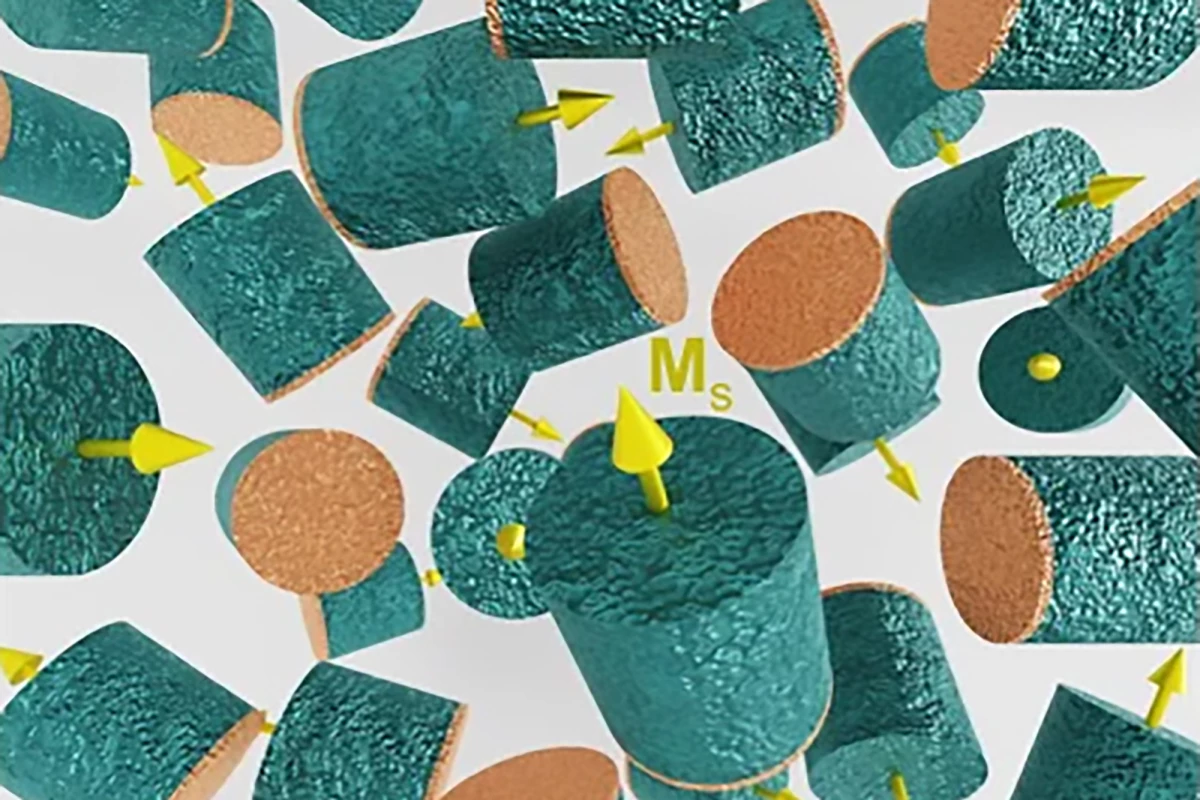After decades of physics-based theorizing, researchers have succeeded in creating a novel optical metamaterial using conventional materials. Its enhanced electromagnetic effect may make true one-way glass a reality and solar panels more efficient.
A traditional material’s response to electric and magnetic fields – and, therefore, to light – is determined by atoms. In optical metamaterials, however, atoms are replaced by meta-atoms that can be structurally engineered to possess properties rarely seen in nature, enabling a design that produces unique electromagnetic responses and allows the precise manipulation of light at the nanoscale.
The ability to control and manipulate light at the nanoscale opens up many applications for metamaterials across various fields. Now, researchers at Aalto University in Finland have created a new optical metamaterial that may make true one-way glass a reality.
In its most general form, the magnetoelectric (ME) effect denotes a coupling between a material’s magnetic and electric properties. While the effect of magnetization on traditional materials at optical frequencies is negligible, it can be enhanced using metamaterials, where magnetization can be induced by the electric component of light, and polarization can be generated by the magnetic component.
Previous studies have demonstrated that magnetism is strong at microwave frequencies, producing pronounced ME effects at this spectral range. Despite two decades of theorizing, it’s been difficult to realize a metamaterial that operates outside of that range, until now.

The new metamaterial relied on the nonreciprocal magnetoelectric (NME) effect. Without getting too ‘physics-y,’ the NME effect implies that the magnetization and polarization properties of a material are linked to the different components of light or other electromagnetic waves.
“So far, the NME effect has not led to realistic industrial applications,” said Shadi Safaei Jazi, the study’s lead author. “Most of the proposed approaches would only work for microwaves and not visible light, and they also couldn’t be fabricated with available technology.”
The researchers successfully overcame these issues using existing tech and nanofabrication techniques to create a three-dimensional optical NME metamaterial whose individual meta-atoms, made of conventional materials, cobalt and silicon, spontaneously magnetize.
The novel metamaterial paves the way for applications that would otherwise need a strong external magnetic field to work, such as true one-way glass. Current so-called ‘one-way’ glass is really just semi-transparent, letting light through in both directions. It acts like one-way glass when there’s a difference in brightness between the two sides. However, an NME-based one-way glass wouldn’t require that brightness difference because light could only go through it in one direction.
“Just imagine having a window with that glass in your house, office, or car,” Safaei said. “Regardless of the brightness outside, people wouldn’t be able to see anything inside, while you would enjoy a perfect view from your window.
The metamaterial also has the potential to make solar cells more efficient by blocking the thermal emissions that existing cells radiate back toward the sun, reducing the amount of energy they capture.
The study was published in the journal Nature Communications.
Source: Aalto University






